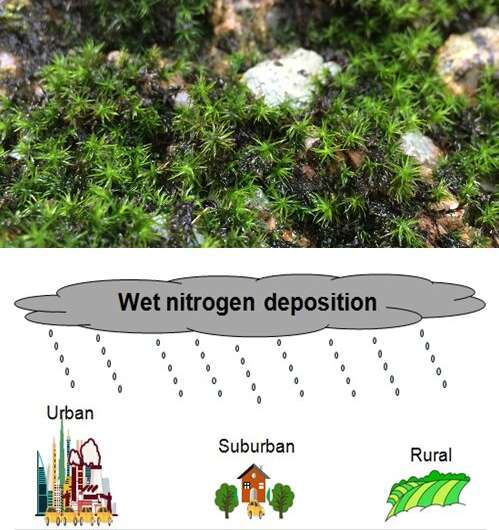
The idea that moss always points to the absence of civilization is a common misconception. While it’s true that moss often thrives in undisturbed, pristine environments, its presence doesn’t automatically equate to a lack of human activity. Moss can be found growing in both urban and rural settings, adapting to a surprising range of conditions. This article will delve into the relationship between moss growth and civilization, exploring factors influencing its distribution and dispelling common myths.
We’ll examine how air pollution affects moss growth, compare moss habitats in urban and rural areas, and discuss the adaptability of different moss species. Furthermore, we’ll analyze the impact of human activities on moss ecosystems and ultimately shed light on the complex interplay between moss and civilization.
Moss Growth and Air Pollution
Moss is highly sensitive to air pollution, particularly sulfur dioxide and nitrogen oxides, which are often released by industrial processes and vehicle emissions. These pollutants can damage moss tissues, inhibiting its growth and survival. Consequently, areas with high levels of air pollution tend to have less moss growth compared to cleaner environments. This observation has led to the misconception that moss is a reliable indicator of pristine, unpolluted areas.
However, it’s important to note that some moss species are more tolerant to air pollution than others. Certain species can even thrive in urban environments with moderate levels of pollution. Additionally, while moss growth may be reduced in polluted areas, it doesn’t necessarily disappear entirely.
Urban vs. Rural Moss Habitats
While moss is often associated with rural landscapes and forests, it can also be found growing in various urban settings. Parks, gardens, rooftops, and even walls of buildings can provide suitable habitats for moss to flourish.
In rural areas, moss typically grows on trees, rocks, soil, and decaying wood. It benefits from the relatively clean air and undisturbed environments often found in these regions. In contrast, urban moss habitats are more diverse and often face challenges such as limited sunlight, compacted soil, and varying levels of pollution. Despite these challenges, urban moss can contribute to biodiversity and provide aesthetic value to cityscapes.
Adaptability of Moss Species
The world of moss is incredibly diverse, with over 12,000 known species exhibiting a remarkable range of adaptations. Some species thrive in humid forests, while others prefer dry, rocky environments. Certain species can tolerate extreme temperatures, while others are sensitive to even slight changes in humidity.
This adaptability allows moss to colonize various habitats, including both urban and rural areas. For example, some species have evolved to survive in polluted environments by developing mechanisms to detoxify pollutants or withstand high levels of air pollution.
Factors Influencing Moss Growth
Several factors influence the growth and distribution of moss, including:
- Moisture: Moss requires moisture for survival and thrives in humid environments.
- Light: While most moss species prefer shade, some can tolerate direct sunlight.
- Temperature: Different moss species have different temperature tolerances.
- Substrate: Moss can grow on a variety of substrates, including soil, rocks, wood, and even concrete.
Human Impact on Moss Ecosystems
Human activities can significantly impact moss ecosystems. Deforestation, urbanization, air pollution, and the introduction of invasive species can all disrupt moss habitats and threaten their survival. However, humans can also play a positive role in preserving moss ecosystems through conservation efforts, habitat restoration, and responsible land management practices.
Conclusion
The notion that does moss always point to civilization is a simplification that overlooks the complex relationship between moss and human activity. While moss often thrives in undisturbed environments with clean air, it’s also capable of adapting to urban settings and surviving in various conditions. Understanding the factors influencing moss growth and the impact of human activities on moss ecosystems is crucial for appreciating the role moss plays in our environment and ensuring its continued survival.
